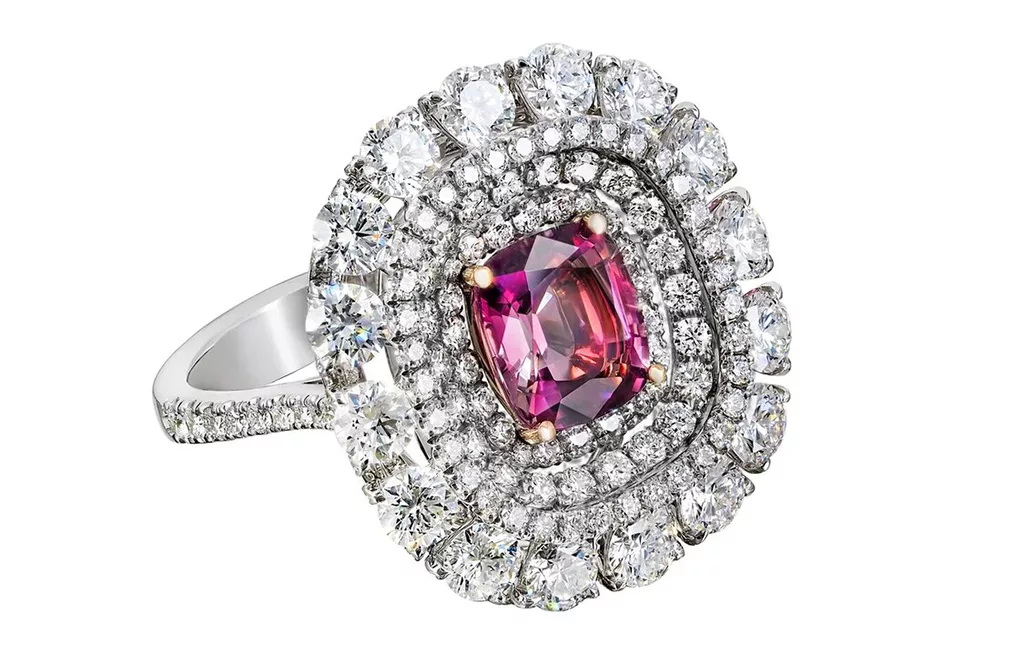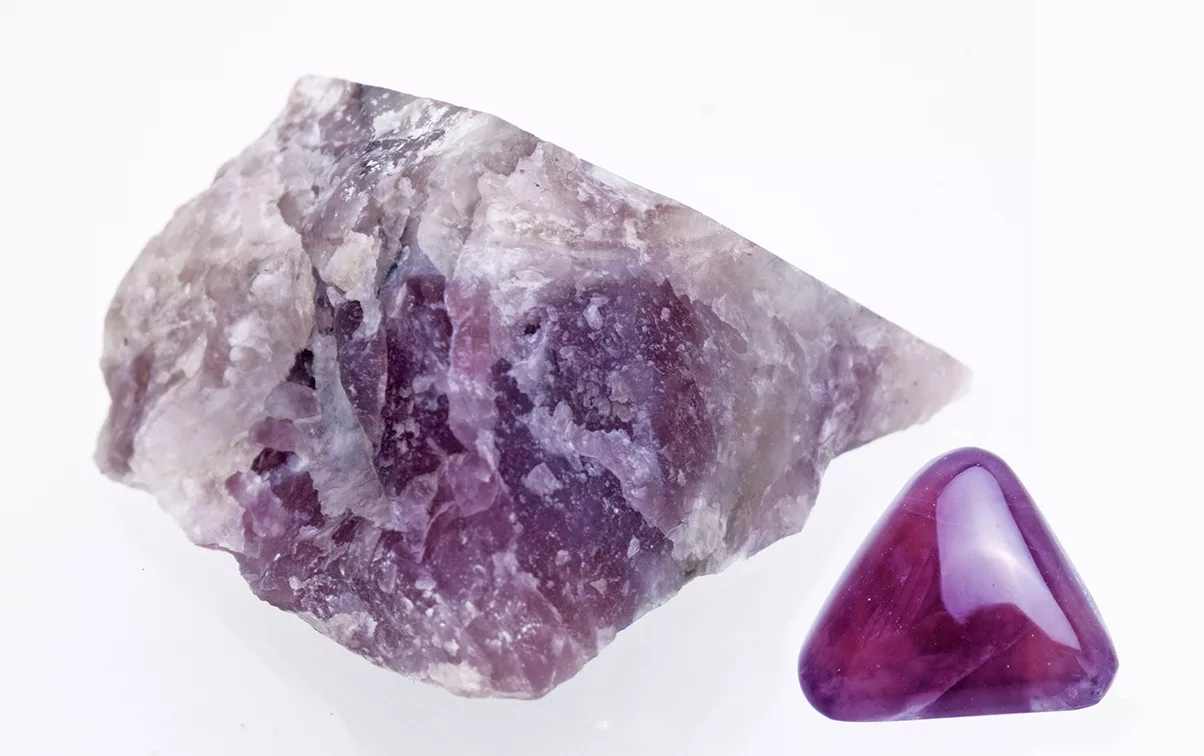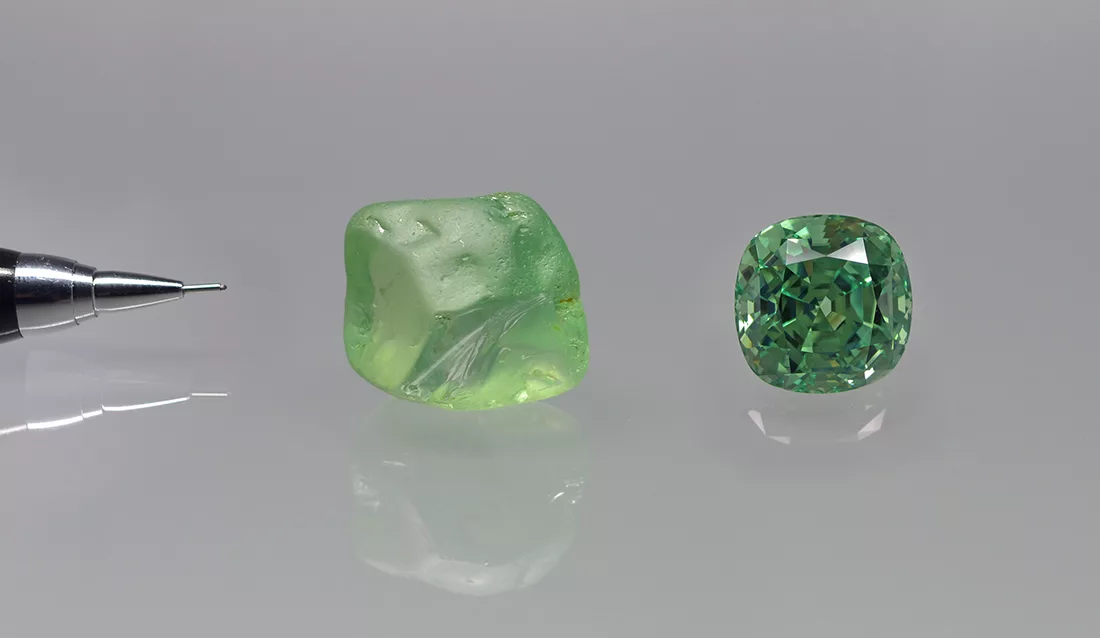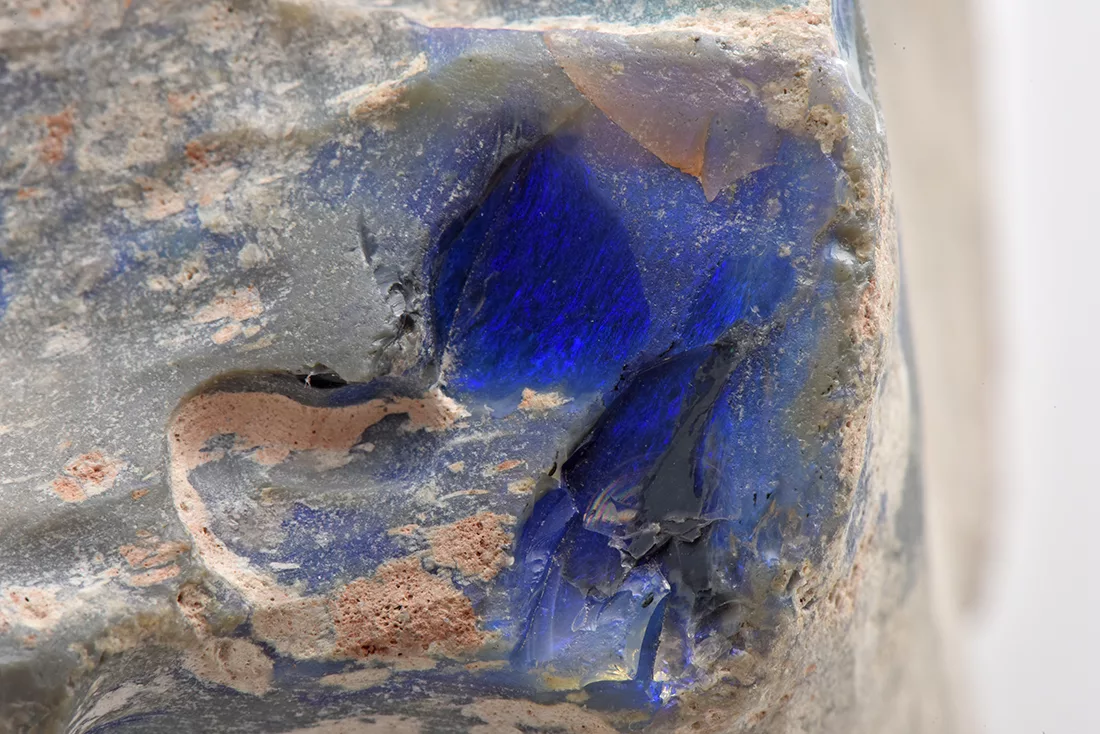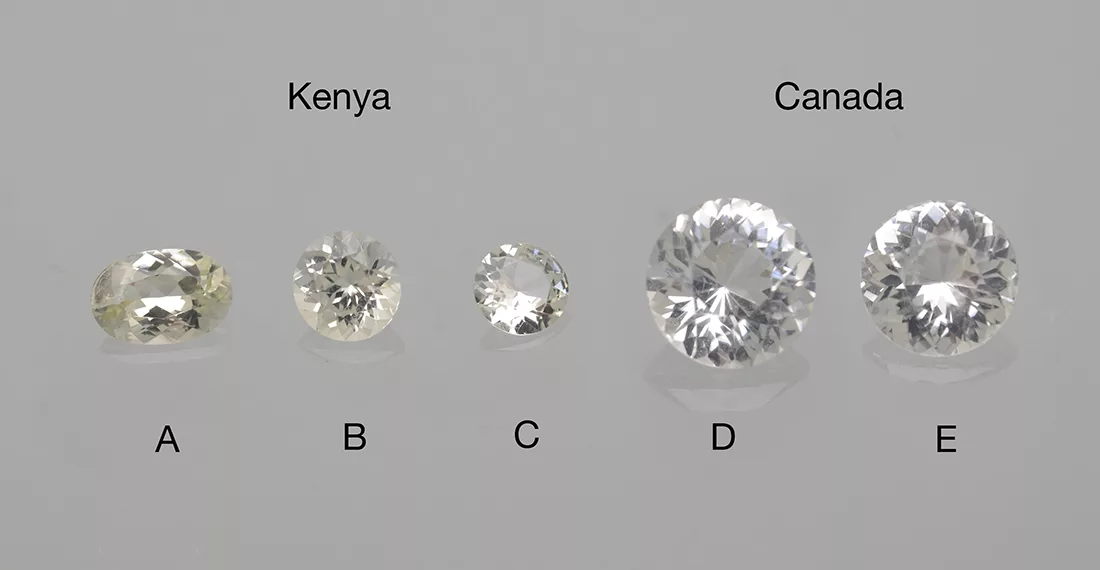To be, or not to be, that is the question: chrysoberyl versus alexandrite
The mineral chrysoberyl BeAl₂O₄ is a highly appreciated gemstone due to its rarity, brilliance, and beauty and comes in attractive colours commonly ranging from colourless (chemically pure) to yellow, yellowish green, green, and brownish green to dark brown, mostly related to the presence of iron in its cry
A gemmologist’s delight: poudretteite, musgravite, taaffeite, and grandidierite
by Dr. M.S. Krzemnicki, first published in Facette 27 (June 2021) In recent months, the SSEF received again a number of very rare collector stones for testing. These included poudretteite, musgravite, taaffeite, and grandidierite of exceptional quality. Poudretteite, ideally KNa2B3Si12O30, is a very r
Deep purple vesuviatine from Pakistan
by Prof. H.A. Hänni, first published in Facette 26 (May 2020) stan has a number of gemstone deposits that are related to the collision of the Indian continent with the Eurasian plate, a consequence of global plate tectonic movements. The gem-producing areas lie in a thrust zone known as Karakorum Suture Zone.
Green spodumene sold as emerald imitation
Spodumene crystals (longest item about 50 cm long and 5.9 kg heavy) submitted to SSEF as new 'emeralds' from Pakistan shown here together with a faceted emerald from Pakistan
Rare Earth Elements in Danburites
The calcium-boron-silicate danburite is a rather rare collector’s stone, mainly known in colourless to slightly yellowish to brownish colours from a limited number of deposits worldwide. Since 2013, new and attractive vivid yellow danburite has entered the gem trade. This new material originates from the Many
Polycristalline Kyanite
first published in Facette 22 (February 2016) The Swiss Gemmological Institute SSEF received two blue translucent samples, a water-worn pebble, and a faceted stone of 1.72 ct cut from the same piece (Figure 1). The material was bought in Arusha (Tanzania) in December 2013 by Mr. Farooq Hashmi. Standard gemmolo
Colourless Chrysoberyl from Mogok
first published in Facette 22 (February 2016) Chrysoberyl is found in various colours, mostly yellow to green and brown due to iron, light green to bluish green (vanadium) or as the colour-changing variety alexandrite (due to chromium). In rare cases, chrysoberyl is also found in colourless and chemically rath
Vanadium Chrysoberyl
first published in Facette 21 (February 2014) Vanadium-bearing chrysoberyl of light green to saturated green colour has been known in the trade since the mid-1990s. Originally first described from Tunduru in southern Tanzania (Johnson & Koivula 1996, Pfenniger 2000), similar attractive “mint green” chr
Study of opalised Dinosaur Vertebra
Recently, the Swiss Gemmological Institute SSEF received an exceptional opalised dinosaur vertebra for study. This specimen was reportedly from Lightning Ridge (New South Wales in Australia) – a world famous source of dark opals and opalised plant and animal fossils - and was already photographed by Elizabeth
Colourless Diopside from Kenya and Canada
first published in Facette 22 (February 2016) Diopside, a calcium magnesium clinopyroxene (MgCaSi2O6), an end-member of the diopside-hedenbergite series (pyroxene) is a rather rare gem species in the trade. Commonly found in greenish brown stones (mostly due to iron content) to dark brown cabochons with an obl

